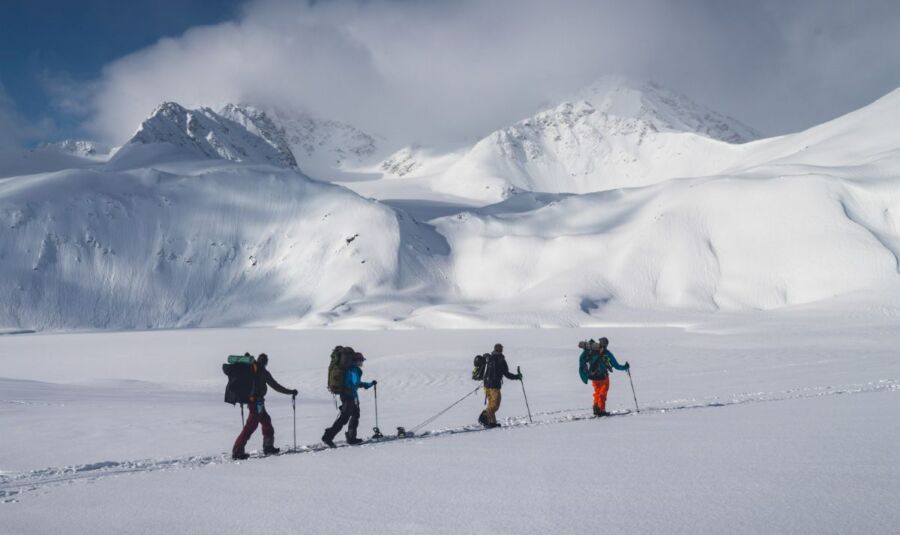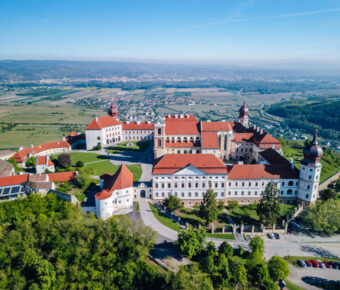
South Pole Trip Cost: Affordable Adventure Under $50K
Planning a trip to the South Pole? Get ready for an adventure unlike any other. This journey to the bottom of the world isn’t cheap, but it’s truly unforgettable. South Pole trips usually cost between $40,000 and $100,000 per person. The price depends on how you travel and what’s included.
You’ll need to fly to Antarctica first, then take another flight or trek to the pole. Some trips offer luxury camps, while others are more basic. The time of year matters too – summer is the only option. Remember, you’re heading to one of the most remote places on Earth. That isolation is part of what makes it so special.
Don’t let the cost scare you off. If this is your dream trip, start saving now. Look for deals and compare different tour companies. Some offer shorter, less expensive options that still let you experience Antarctica’s magic. With careful planning, you can make this once-in-a-lifetime journey happen.
Contents
- Key Takeaways
- Understanding the Costs of a South Pole Expedition
- Expedition Types and Prices
- Cabin Category and Accommodations
- Dynamic Pricing and Booking Tips
- Planning Your Route to the South Pole
- Choosing Your Departure Point
- Drake Passage and Alternative Routes
- Itinerary Variations
- Best Time to Travel and Seasonal Considerations
- Austral Summer and Weather Patterns
- Wildlife Viewing Opportunities
- Understanding the Antarctic Environment and Preservation
- The Antarctic Treaty and Environmental Protection
- Minimizing Environmental Impact in the Antarctic
- Activities and Experiences in the Antarctic
- Adventure Activities Available on Expeditions
- Camping and Immersive Opportunities
- Expedition Crew and Onboard Experiences
- Remote Destinations and Landmark Visits
- Visiting the Geographic and Ceremonial South Pole
- Exploring the Antarctic Peninsula and Beyond
- More Travel Guides
Key Takeaways
- South Pole trips are expensive but offer a unique adventure
- Costs vary based on travel method, accommodations, and trip length
- Summer is the only time to visit, with limited options available
Understanding the Costs of a South Pole Expedition
A trip to the South Pole is a big investment. The price can vary a lot based on how you go, where you stay, and when you book. Let’s break down the main costs you’ll face.
Expedition Types and Prices
South Pole trips come in different flavors. A basic 10-day trip might set you back $10,000. But if you want to go all out, a 20-day luxury expedition could cost up to $30,000. Some trips focus on seeing penguins and icebergs along the coast. Others take you deep into the icy heart of Antarctica.
The priciest option? A flight straight to the South Pole. You’ll land near the Amundsen-Scott Station, where the ice is a whopping 10,000 feet thick! It’s not cheap, but the bragging rights are priceless.
Remember, these prices usually cover everything – flights, food, and guides. But always check what’s included before you book.
Cabin Category and Accommodations
Where you sleep can make a big difference in your trip cost. Most Antarctica cruises offer different cabin types. The cheapest might be a small inside room with no window. The most expensive? A fancy suite with a private balcony.
Prices can double or even triple based on your cabin choice. But don’t worry – even the basic rooms are comfy. You’re in Antarctica, after all! You won’t spend much time in your cabin anyway.
Some ships have shared bathrooms to keep costs down. Others offer luxury suites with all the trimmings. Pick what fits your budget and comfort level.
Dynamic Pricing and Booking Tips
Antarctica trip prices change like the weather. Book early, and you might snag a deal. Wait too long, and you could pay top dollar. Some companies offer early bird discounts. Others have last-minute sales to fill empty spots.
Keep an eye out for special offers. You might find deals on certain dates or cabin types. Flexibility is key – if you can travel off-peak, you’ll often pay less.
Don’t forget about hidden costs. You’ll need warm gear, travel insurance, and maybe some extra excursions. Budget for these extras to avoid surprises.
And here’s a pro tip: some companies offer “share” options. You can split a cabin with another solo traveler to save money. It’s a great way to make your Antarctica dream more affordable.
Planning Your Route to the South Pole

Getting to the South Pole takes careful planning. You’ll need to choose where to start, figure out how to cross the Antarctic waters, and pick an itinerary that fits your time and budget.
Choosing Your Departure Point
Punta Arenas, Chile is the main gateway for South Pole trips. This city at the southern tip of South America has an airport with flights to Antarctica. You’ll spend a day or two here preparing for your journey.
Other possible starting points are:
• Ushuaia, Argentina
• Cape Town, South Africa
• Christchurch, New Zealand
These cities offer different route options, but Punta Arenas is usually cheapest and most convenient for reaching the South Pole.
Drake Passage and Alternative Routes
To reach Antarctica, you have two main choices:
- Sail across the Drake Passage (2 days each way)
- Fly over the Drake Passage (2 hours each way)
Sailing is cheaper but takes longer. It can also be very rough. Flying costs more but saves time and avoids seasickness. A typical flight from Punta Arenas to Antarctica is about $4,000-$5,000 round trip.
Some tours offer a “fly-cruise” option. You fly one way and sail the other. This gives you a taste of both experiences.
Itinerary Variations
South Pole trips usually last 7-14 days. A basic itinerary might look like this:
Day 1-2: Arrive in Punta Arenas, gear check
Day 3: Fly to Antarctica
Day 4-5: Acclimatize at Union Glacier Camp
Day 6: Fly to South Pole, spend a few hours there
Day 7: Return to Punta Arenas
Longer trips may include:
• More time at the South Pole
• Visits to emperor penguin colonies
• Skiing or climbing excursions
Prices range from $50,000 to $100,000+. The exact cost depends on your route, activities, and trip length.
Best Time to Travel and Seasonal Considerations

The Antarctic summer offers the best conditions for South Pole trips. You’ll find milder temperatures, longer days, and more wildlife during this time. Let’s look at what you can expect weather-wise and which animals you might see.
Austral Summer and Weather Patterns
The Antarctic summer, from November to March, is your window for South Pole travel. Temps range from -20°C to -40°C (-4°F to -40°F). It’s still cold, but way better than winter! You’ll get 24 hours of daylight, perfect for exploring.
November and December bring spring-like conditions. The ice starts to break up, opening sea routes. January and February are the warmest months. March sees temps drop as autumn sets in.
Pack lots of warm layers! Even in summer, it’s freezing. Bring good boots, thick socks, and cozy gloves. Don’t forget sunglasses – the sun reflects off the snow and ice.
Wildlife Viewing Opportunities
Summer is prime time for Antarctic wildlife. You’ll have the best chance to see penguins, seals, and whales.
Penguins are busy in summer. Emperor penguins hatch their chicks in November. By January, you’ll see fuzzy penguin babies waddling around. Adelie and gentoo penguins are active too.
Seals love to sunbathe on ice floes. You might spot Weddell, crabeater, and leopard seals. If you’re lucky, you could see a massive elephant seal!
Whales start showing up in December. Humpbacks, minkes, and orcas are common sights. They come to feast on the summer’s abundance of krill.
Remember, wildlife sightings aren’t guaranteed. But summer gives you the best odds of seeing these amazing Antarctic animals.
Understanding the Antarctic Environment and Preservation

Antarctica is a unique and fragile ecosystem that needs special care. Visitors must follow strict rules to protect this icy wilderness while enjoying its beauty.
The Antarctic Treaty and Environmental Protection
The Antarctic Treaty, signed in 1959, sets the rules for human activities in Antarctica. It bans military use and mining. The treaty also protects wildlife and the environment. Countries that signed it work together to manage the continent.
In 1991, they added the Protocol on Environmental Protection. This makes Antarctica a “natural reserve for peace and science.” It bans taking minerals except for research. The protocol also sets rules for waste management and protecting plants and animals.
Minimizing Environmental Impact in the Antarctic
When you visit Antarctica, you need to be extra careful. Tour operators follow strict guidelines to protect the environment. They limit the number of people who can go ashore at one time. You’ll need to clean your boots before and after landings to avoid bringing in foreign species.
Don’t take anything from Antarctica, not even rocks or feathers. Stay at least 15 feet away from wildlife. Never feed the animals. Use biodegradable soaps and shampoos on your trip. Stick to marked trails when walking on land. By following these rules, you help keep Antarctica pristine for future visitors.
Activities and Experiences in the Antarctic

Antarctica offers unique adventures you won’t find anywhere else. From close wildlife encounters to adrenaline-pumping activities, there’s something for every type of traveler.
Adventure Activities Available on Expeditions
Get ready for some epic Antarctic fun! You can go kayaking among icebergs, spotting seals and whales up close. Brave the icy waters with polar plunges – a quick dip you’ll never forget. For the truly adventurous, try stand-up paddleboarding or book a thrilling snowshoeing excursion to explore pristine snowy landscapes.
Hiking and mountaineering let you soak in breathtaking views. Photographers will love zodiac cruises for up-close shots of wildlife and massive ice formations. Some trips even offer scuba diving for a peek at the underwater world.
Don’t worry if you’re new to these activities. Guides provide all the gear and training you need to stay safe while having an awesome time.
Camping and Immersive Opportunities
Want to really feel like an Antarctic explorer? Try camping on the ice! You’ll sleep under the stars (well, 24-hour daylight) in cozy tents or bivvy bags. It’s a chance to hear the ice cracking and penguins chattering through the night.
Some expeditions offer “citizen science” programs. You can help collect data on wildlife or climate change alongside researchers. It’s a cool way to contribute to important scientific work.
Photography workshops are popular too. Pro photographers teach you tricks for capturing the perfect penguin portrait or dreamy iceberg shot. You’ll come home with amazing photos to show off.
Expedition Crew and Onboard Experiences
Your ship is like a floating hotel and classroom rolled into one. Expert guides give talks on Antarctic history, wildlife, and science. You’ll learn tons about this unique place from passionate pros.
Between landings, hang out in the lounge swapping stories with fellow travelers. Most ships have viewing decks where you can spot whales and seabirds. Some even have gyms, spas, and libraries to keep you comfy.
Meals are often a highlight, with chefs whipping up gourmet dishes. You might get to try local specialties like Chilean sea bass. Don’t miss the bar for a nightcap with new friends as you sail past stunning scenery.
Remote Destinations and Landmark Visits

A trip to the South Pole lets you visit some of Earth’s most isolated places. You’ll see iconic landmarks and explore untouched wilderness few humans ever experience.
Visiting the Geographic and Ceremonial South Pole
At the Geographic South Pole, you’ll stand at the southernmost point on Earth. This spot is marked by a metal pole surrounded by flags of Antarctic Treaty nations. Nearby is the Ceremonial South Pole – a shiny silver globe on a red and white striped pole. It makes for great photos!
The Amundsen-Scott South Pole Station is also here. This US research base houses scientists year-round. You might get a quick tour if conditions allow.
Reaching the pole isn’t easy or cheap. Expect to pay $50,000 or more for a flight from Antarctica’s coast. The trip takes several hours in a small plane over endless ice.
Exploring the Antarctic Peninsula and Beyond
The Antarctic Peninsula is the most visited part of the continent. It’s closer to South America and has milder weather. You’ll see stunning ice-covered mountains and busy penguin colonies.
Popular stops include:
- Paradise Bay: Scenic harbor with towering glaciers
- Lemaire Channel: Narrow passage between cliffs
- Deception Island: An active volcano you can sail into
For the adventurous, Mount Vinson is Antarctica’s highest peak at 16,050 feet. Climbing it costs around $40,000.
The remote Ross Sea region offers emperor penguin colonies and historic huts from early explorers. Trips here are rare and pricey, often $30,000+.



